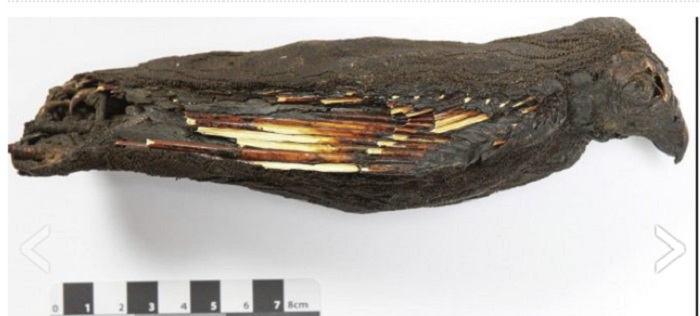Researchers from the American University in Cairo, Stellenbosch University and the Stellenbosch Institute for Advanced Studies say the bird died from being forced to eat too much: Its stomach contained evidence of a house mouse on which the bird had likely choked to death.
The raptor also appeared to have eaten another mouse on the same day, and parts of a small sparrow were also found. And, the scientists wrote, "there is no indication that it was deliberately killed as there is no clear separation of, or broken, vertebrae."
"The idea of birds of prey being bred to the extent of being kept and force-fed is new," said Salima Ikram, in a press release.
"Until now," said Ikram, professor of Egyptology at the American University in Cairo and lead author of the study, "the sheer number of raptor mummies had been a mystery. Did they catch or trap them and kill them, raid nests, or find them dead? Our results explain why they had so many: We now think it was because of active breeding."
What isn`t new is the idea of animal mummies. They were commonly used in religious ceremonies from around 600 B.C. to 250 A.D., the researchers write, and many such offerings have been recovered.
Egyptians typically gutted ceremonial animals prior to mummification, but this bird, supplied by South Africa`s Iziko Museums, had not received that treatment. That left its last meal available for examination.
"When we saw how much the kestrel ate and how it choked, we suddenly had an idea about how the ancient Egyptians managed to mummify so many raptor and the implications about wild animal husbandry and the possibility of falconry being practiced in ancient Egypt," said Ikram.
"We know raptors were religiously important but it’s interesting to think about the role they may have had in falconry," he added. "It’s also interesting that Egyptians were exerting so much thought and control over nature and that their aptitude with wild animals is considerable."
More about:
















































